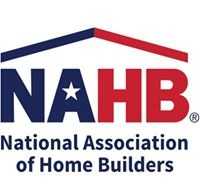WASHINGTON, D.C. – January 24, 2013 – (RealEstateRama) — The segment of the housing industry that caters to those home buyers and renters who are 55+ years old will continue to improve in 2013, according to industry experts at a press conference held today at the National Association of Home Builders (NAHB) International Builders’ Show in Las Vegas. This trend is expected to continue as the share of U.S. households age 55+ will increase significantly through 2020.
“We expect to see an increased demand for 55+ housing as more baby boomers turn 55 and seek homes and communities that offer the lifestyle they desire,” said Paul Emrath, NAHB’s vice president of survey and housing policy research. “NAHB is projecting that the number of housing starts in 55+ communities will increase 22 percent to 74,302 units in 2013, and another 20 percent to 89,071 in 2014.”
Builders and developers say they have seen an uptick not only in the number of people who are generally interested in 55+ housing, but also in the number of people who are actually making the move to purchase a new home. “We are seeing more consumers overcome the inertia of waiting on the sidelines to buy a new home as they become more confident in their local market conditions,” said Bob Karen of Owings Mills, Md., incoming chairman of NAHB’s 50+ Housing Council.
The reason, they say: These potential buyers are more often able to sell their existing homes. “For the longest time, there wasn’t even a reason to look into 55+ housing as many consumers weren’t able to sell their existing homes at a fair price,” said W. Don Whyte of South Jordan, Utah, and chairman of NAHB’s 50+ Housing Council. “That is beginning to change as the overall housing market continues to improve.”
Karen and Whyte agreed that knowing their customer base and creating homes and communities that meet the needs of the 55+ buyer is crucial for builders’ success. “We are servicing the largest growing group of buyers that we have ever seen in this age category, and it is a population that is dramatically different from what it was only a few years ago,” said Whyte. “That’s why it is so important to know what consumers are looking for in 55+ homes and communities.”
Emrath shared results from NAHB’s “What Home Buyers Really Want” survey that polled recent and prospective buyers. “Walking and jogging trails and park areas are the two community amenities most likely to attract both baby boomers and seniors,” said Emrath. “These are also the two most popular amenities among younger home buyers. The older the buyers, however, the more likely they are to prefer a community offering an outdoor maintenance service. It’s also interesting to see that many of the baby boomers and seniors who buy homes prefer to live in suburbs and rural areas, rather than in central cities.”







